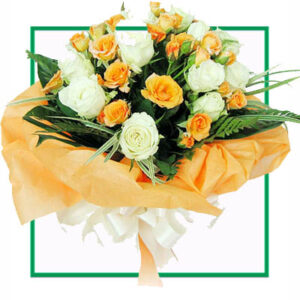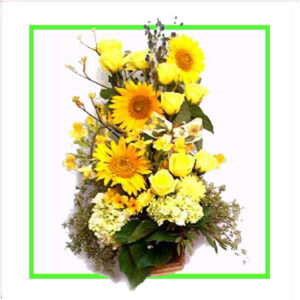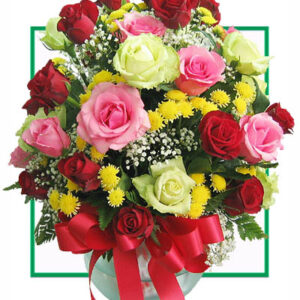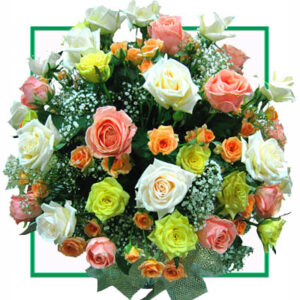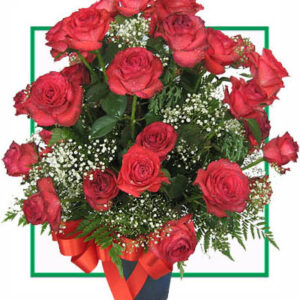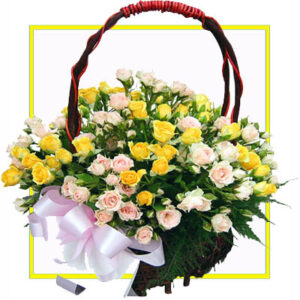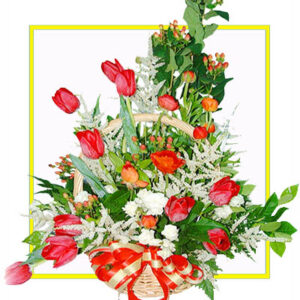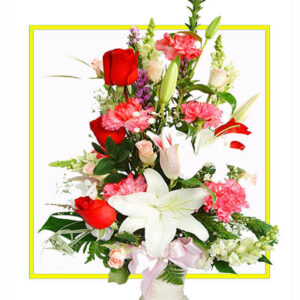Jhansi was a stronghold of the Chandela kings. Balwant Nagar was the name of this place. But in 11th century Jhansi lost its importance. In 17th century under Raja Bir Singh Deo 1ST(REIGN PERIOD 1605 TO 1627) of Orchha (Jhansi) again rose to prominence. Raja Bir Singh Deo had good relations with the Mughal emperor Jehangir. In five year construction period (1613 to 1618) Raja Bir Singh Deo got constructed the Jhansi fort and arround it got established a BALWANT NAGAR which lateron named jhansi.A SILVER RUPEE COIN MINTED IN THE NAME OF BALWANTNAGAR IN THE REIGN OF SHAHALAM 2ND FOR THE REGIONAL YEAR 11 IS WITH SHRI HM DUBEY AT JHANSI.RAJA BIR SINGH JI DEO EXPIRED in 1627. After his death his son JuJhar Singh succeeded him. SHRI BIRSINGH JI DEO WAS A BRAVE KING.THERE WERE 81 PARGANA AND 12500 VILLAGES UNDER HIS REIGN WITH A REVENUE INCOME OF RS TWO CRORES PER YEAR. A silver Coin of Shah Alam II RY 11.jpg Maharaja Chattrasal Bundela of Panna was beset by incursions into the Bundela country by the Muslim governors of the Mughal empire; in 1729 Mohammed Khan Bangash attacked Chattrasal. In 1732 Chhatrasal, the Bundela king, a good administrator and a brave warrior, called in the aid of the Hindu Marathas. Peshwa Baji Rao (I) helped Maharaja Chattrasal and defeated the Mughal army, and Maratha Peshwa Baji Rao (I) was rewarded by the bequest of one-third of the Maharaja’s dominions upon his death two years later (Jhansi was included in this part). The Maratha general developed the city of Jhansi, and peopled it with inhabitants from Orchha state. In 1742 Naroshanker was made the subedar of Jhansi. During his tenure of 15 years he not only extended the Jhansi fort which was of strategic importance but also constructed some other buildings. The extended part of the fort is called Shankergarh. In 1757 Naroshanker was called back by the Peshwa; his successor was Madhav Govind Kakirde who was himself succeeded by Babulal Kanahai. Next in the line of subedars was Vishwas Rao Laxman (1766-1769) who was followed by Raghunath Rao (II) Newalkar. He was a very able administrator and succeeded in increasing the revenue of the state. The MahaLakshmi Temple and the Raghunath Temple were built by him. In 1804 British protection was promised to the Maratha subedar resulting in his de facto independence of the Peshwa in Pune and a treaty of 1817 between the Peshwa and the British East India Company meant that he no longer claimed rights in Bundelkhand.
From August 1857 to January 1858 Jhansi under the Rani’s rule was at peace. The British had announced that troops would be sent there to maintain control but the fact that none arrived strengthened the position of a party of her advisers who wanted independence from British rule. When the British forces finally arrived in March they found it well defended and the fort had heavy guns which could fire over the town and nearby countryside. Sir Hugh Rose, commanding the British forces, demanded the surrender of the city; if this was refused it would be destroyed. After due deliberation the Rani issued a proclamation: “We fight for independence. In the words of Lord Krishna, we will if we are victorious, enjoy the fruits of victory, if defeated and killed on the field of battle, we shall surely earn eternal glory and salvation.” She defended Jhansi against British troops when Sir Hugh Rose besieged Jhansi on 23 March 1858. The bombardment began on 24 March but was met by heavy return fire and the damaged defences were repaired. The defenders sent appeals for help to Tatya Tope. An army of more than 20,000, headed by Tatya Tope, was sent to relieve Jhansi but they failed to do so when they fought the British on 31 March. During the battle with Tatya Tope’s forces part of the British forces continued the siege and by 2 April it was decided to launch an assault by a breach in the walls. Four columns assaulted the defences at different points and those attempting to scale the walls came under heavy fire. Two other columns had already entered the city and were approaching the palace together. Determined resistance was encountered in every street and in every room of the palace. Street fighting continued into the following day and no quarter was given, even to women and children. “No maudlin clemency was to mark the fall of the city” wrote Thomas Lowe. The Rani withdrew from the palace to the fort and after taking counsel decided that since resistance in the city was useless she must leave and join either Tatya Tope or Rao Sahib (Nana Sahib’s nephew). The Rani escaped in the night with her son, surrounded by guards. Rani Lakshmibai died in battle at Gwalior on 18 June. It was not until November, 1858 that Jhansi was brought under British control.
In 1817 the Maratha Peshwa in Pune had ceded all his rights over Bundelkhand to the Company. After the death of Shiv Rao his grandson Ramchandra Rao was made subedar of Jhansi. He was not a good administrator. Ramchandra Rao died in 1835. After his death Raghunath Rao (III) was made his successor. In 1835 he was favoured with the title “Maharajahdhiraj Fidvi Badshah Jamjah Inglistan”. On the death of that raja his widow adopted a son of her sister which however was followed by him being passed over (which was in accordance with Hindu tradition) so that another prince became raja. The new raja Raghunath Rao (III) was so incapable and dissolute that the administration came under British control while he himself remained raja. On his death in 1838 the British rulers then accepted Ganghadar Rao (a ‘natural son’ of the raja) as the Raja of Jhansi in 1843. Due to the inefficient administration during the period of Raghunath Rao (III) the financial position of Jhansi was very critical. However the raja was a cultured man who was able to enrich the architecture of the city and acquire a fine library of Sanskrit manuscripts, though he was without issue. Raja Ganghadar Rao adopted a child called Anand Rao, the son of his cousin, who was renamed Damodar Rao, on the day before he died. The adoption was in the presence of the British political officer who was given a letter from the raja requesting that the child should be treated with kindness and that the government of Jhansi should be given to his widow for her lifetime. After the death of the raja in November 1853 because Damodar Rao was adopted, the British East India Company, under Governor-General Lord Dalhousie, applied the Doctrine of Lapse, rejecting Damodar Rao’s claim to the throne and annexing the state to its territories. The Jhansi state and the Jalaun and Chanderi districts were then formed into a superintendency. In March 1854, Lakshmibai was given a pension of Rs. 60,000 and ordered to leave the palace and the fort. Rani Lakshmibai, widow of the Raja, petitioned the Governor General and then the British government that Damodar Rao’s claim to the throne should be recognised. She was also displeased because the slaughter of cattle was now permitted in the Jhansi territory.
The Indian Rebellion of 1857 accordingly found Jhansi ripe for rebellion. In June a few men of the 12th Bengal Native Infantry seized the fort containing the treasure and magazine, and massacred the European officers of the garrison along with their wives and children on 8 June 1857. The massacre is commemorated in the poem ‘In the Round Tower at Jhansi, 8 June 1857’ by Christina Rossetti, in which a British army officer takes his wife’s life and his own so that they do not have to face a horrific and dishonourable death at the hands of the rebelling sepoys. Four days after the massacre the sepoys left Jhansi having obtained a large sum of money from the Rani, and having threatened to blow up the palace where she lived. Following this as the only source of authority in the city the Rani felt obliged to assume the administration and wrote to Major Erskine, commissioner of the Saugor division explaining the events which had led her to do so. On July 2 Erskine wrote in reply that he requested her to “manage the District for the British Government” until the arrival of a British Superintendent. The Rani’s forces defeated an attempt by the mutineers to assert the claim to the throne of a rival prince who was captured and imprisoned. There was then an invasion of Jhansi by the forces of Orchha and Datia (allies of the British); their intention however was to divide Jhansi between them. The Rani appealed to the British for aid but it was now believed that she was responsible for the massacre and no reply was received. She assembled forces including some from former feudatories of Jhansi and elements of the mutineers which were able to defeat the invaders in August 1857. Her intention at this time was still to hold Jhansi on behalf of the British.
Being on a rocky plateau, Jhansi experiences extreme temperatures. Winter begins in October with the retreat of the Southwest Monsoon (Jhansi does not experience any rainfall from the Northeast Monsoon) and peaks in mid-December. The mercury generally reads about 4 degrees minimum and 21 degrees maximum. Spring arrives by the end of February and is a short-lived phase of transition. Summer begins by April and summer temperatures can peak at 47 degrees in May. The rainy season starts by the third week of June (although this is variable year to year). Monsoon rains gradually weaken in September and the season ends by the last week of September. In the rainy season, the average daily high temperature hovers around 36 degrees Celsius with high humidity. The average rainfall for the city is about 900 mm per year, occurring almost entirely within the three-and-a-half months of the Southwest Monsoon. In summer Jhansi experiences temperatures as high as 45-47 degrees and in winter the temperatures fall as low as 0-1 degrees (recorded in winter 2011).
Two novels by John Masters are set in the fictional town of Bhowani. According to the author, writing in the Glossary to the earlier novel, Nightrunners of Bengal, Bhowani is an “imaginary town. To get a geographical bearing on the story it should be imagined to be about where Jhansi really is – 25.27 N., 78.33 E.” Nightrunners of Bengal is set during the Indian Rebellion of 1857 at “Bhowani” (the title alludes to the mysterious distribution of “chapatis” to village headmen which preceded the revolt). Bhowani Junction is set in 1946/47 the eve of independence and in both novels the main character is Colonel Rodney Savage, a British army officer and part of a succession of such men from the same family.
Jhansi Airport is a military aviation base built in the British era used by the Indian army and political visitors. Though there are provisions for private aircraft to land, there are no civil aviation operations. There had been a demand to make it operational for commercial purposes in the 1990s and again in the 2000s. The Uttar Pradesh government announced the construction of an all new civil aviation base to support tourism in Bundelkhand in April 2011. The Indian army maintains an objection to extension of the military aviation. So, the government has examined three different places other than army aviation base for the airport in Jhansi. Gwalior Airport is the nearest airport from Jhansi.
Jhansi Junction has its own Division of the Indian North Central Railways. It is well connected by train services to all parts of the country, including four metropolitan cities. There are direct trains to Mumbai, Delhi, Kolkata (Howrah), Chennai, Bangalore (Bengaluru), Trivandrum, Indore, Ahmedabad, Udaipur, Pune, Jammu, Jaipur, Lucknow, Bhopal, Mahoba, Khajuraho, Gaya, Jalgaon, Bhusaval, Jabalpur, Kanpur, Allahabad,Gorakhpur, Bandra and other major towns. A list of all train services passing through Jhansi Junction can be found here.
According to a legend the Raja of Orchha was sitting on the roof of his palace with his friend, the Raja of Jaitpur, and asked the latter whether he could discern this new fort that he had built on Bangara hill, and he replied that he could see it ‘jhainsi’ (meaning rather indistinct). This name ‘Jhainsi’ in course of time became corrupted to ‘Jhansi’. It was one of the most strategically situated forts of central India being built on an elevated rock rising out of the plain and commanding the city and the surrounding country.
In 1861 the city and a dependent territory was ceded to Gwalior State and the capital of the district was moved to Jhansi Naoabad (Jhansi Refounded), a village without “cantonment” (military camp). Jhansi (the old city) became the capital of a “subah” (provínce) within the state of Gwalior, but in 1886 was returned to British rule in exchange for the Gwalior Fort and the cantonment of Morar nearby. (It had been given to the Maharaja of Gwalior, but came under British rule in 1886 as the result of a territorial swap.)
The land is suitable for species of citrus fruit and crops include wheat, pulses, peas, and oilseeds. The region relies heavily on Monsoon rains for irrigation purposes. Under an ambitious canal project (the Rajghat canal), the government is constructing a network of canals for irrigation in Jhansi and Lalitpur and some part of Madhya Pradesh. The trade in agricultural products (including grain and oilseeds) is of great economic importance. The city is also a centre of brassware manufacture.
The city is situated between the rivers Pahuj and Betwa between North longitudes 24°11´ and 25°57´and East latitudes 78°10´and 79°25´. It has an average elevation of 284 metres (935 feet). The boundary of the city is irregular, the northern boundary being contiguous with that of the district of Jalaun. Jhansi is well connected to all other major towns in Uttar Pradesh by road and railway networks. It is about 415 km from New Delhi and 292 km from Lucknow, and is called the Gateway to Bundelkhand.
Jhansi ( pronunciation (help·info)) Urdu (“??????”) is a historic city of northern India, located on the banks of the Pahuj or Pushpavati River, in the state of Uttar Pradesh. It is located in the region of Bundelkhand. Jhansi is the administrative headquarters of Jhansi District and Jhansi Division. The original walled city grew up around its stone fort, which crowns a neighboring rock. This district is on the banks of the Betwa River.
The proposed north-south and east-west corridors of the Golden-Quadrilateral Highway project pass and cross each other only in Jhansi and the city is also well connected to Kanpur, Lucknow and Madhya Pradesh by road. The four lane national highway is at the last stage of its completion, giving a boom in infrastructure and other sectors in Jhansi and nearby areas; the greenery near this highway is attractive.
According to the 2011 census, Jhansi has a population of 507,293 and its Urban Agglomeration 549,391. As of 2011 82% of the population are Hindu, 14.5% are Muslims, 2.0% are Christians and the rest 1.5% are Sikhs, Jains and Buddhists. Jhansi city has 85th rank among the most populated cities of India, according to the 2011 Census. The literacy rate of Jhansi is 63.81%, much lower than the national average.
Bundelkhand Institute of Engineering and Technology is a government-funded autonomous engineering college in Jhansi. It is a constituent college of Gautam Buddha Technical University and is recognised by the All India Council for Technical Education. It was established in 1986 by the government of Uttar Pradesh.
Jhansi is located at 25.4333 N 78.5833 E. It has an average elevation of 284 metres (935 feet). Jhansi lies on the plateau of central India, an area dominated by rocky relief and minerals underneath the soil. The city has a natural slope in the north as it is on the south western border of the vast Tarai plains of Uttar Pradesh and the elevation rises on the south.
The National Highway Development Project has supported development of Jhansi. The north-south corridor connecting Kashmir to Kanyakumari passes through Jhansi as does the East-West corridor; consequently there has been a sudden rush to infrastructure and real estate development in the city. A greenfield airport development has been planned.
Weapons, statues, dresses and photographs that represents the Chandela dynasty and a picture gallery of the Gupta period are the highlights. There are also terracotta’s, bronzes, manuscripts, paintings and coins. Closed on Mondays and second Saturday of every month.
Send Flowers to Jhansi
CopyRights © 2024 Glowyflowers.com. (SV Mobile Teleshoppe Private Limited.)All Rights Reserved
Product has been added to your cart







































